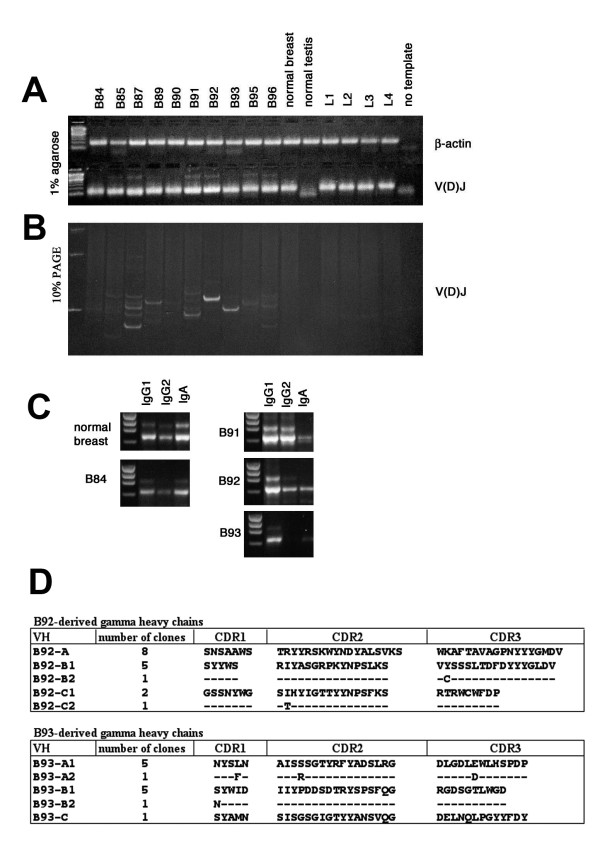Figure 1.
Analysis of oligoclonality of TIL-derived antibodies. (a) V(D)J analysis of TIL-derived antibody genes. SMART cDNA derived from ten different tumor samples (patients B84, B85, B87, B89, B90, B91, B92, B93, B95, B96), normal breast, normal testis and peripheral blood lymphocytes from four healthy donors (L1, L2, L3, L4), was used, as template for amplification of V(D)J antibody regions. Samples of cDNA were normalized by amplification of β-actin housekeeping gene. All V(D)J fragments were well-amplified and gave DNA bands of expected molecular weight in all cases, excluding normal testis cDNA sample. (b) The same PCR products were fractionated by 10% PAGE, giving a higher resolution of DNA bands. (c) Antibody subclass distribution. PCR-amplified normal breast and B84 cDNA samples not showing oligoclonal bands in V(D)J test, have prevalence of IgA bands in comparison to IgG1 and IgG2 (left panels), while three samples, B91, B92 and B93, giving strong oligoclonal bands in previous test, have IgG1 or both IgG1 and IgG2 band prevalence in comparison with IgA (right panels). (d) Clonality of heavy chain antibodies derived from B92 and B93 cDNA samples. Amino acid sequences of variable regions of 30 clones were deduced from randomly sequenced γ-chain antibody genes derived from B92 and B93 cDNA. Peptide sequences are reported in single-letter code. Identical amino acids in similar clones are represented by a dash.

